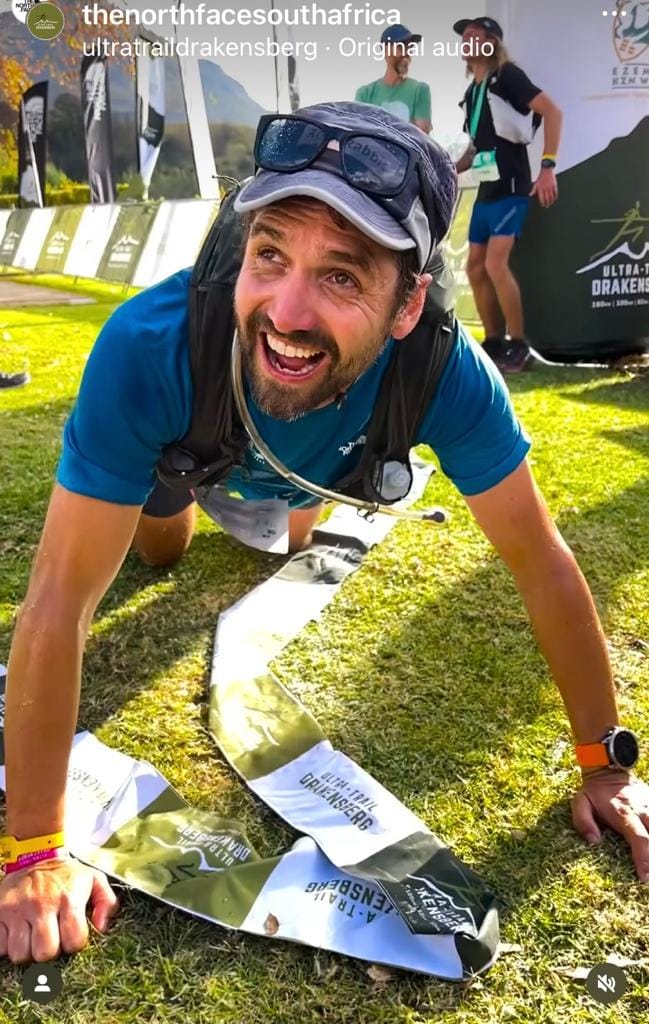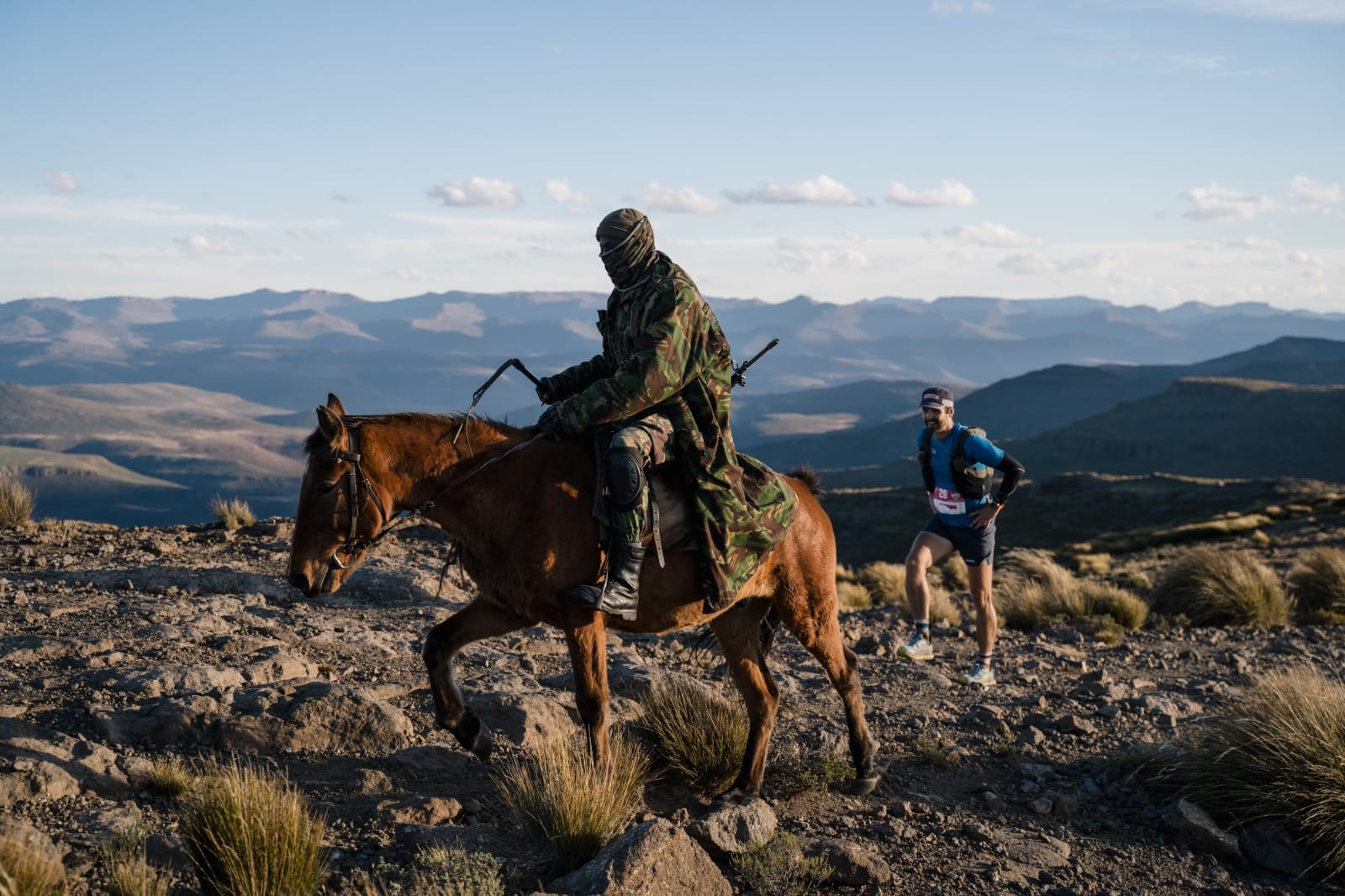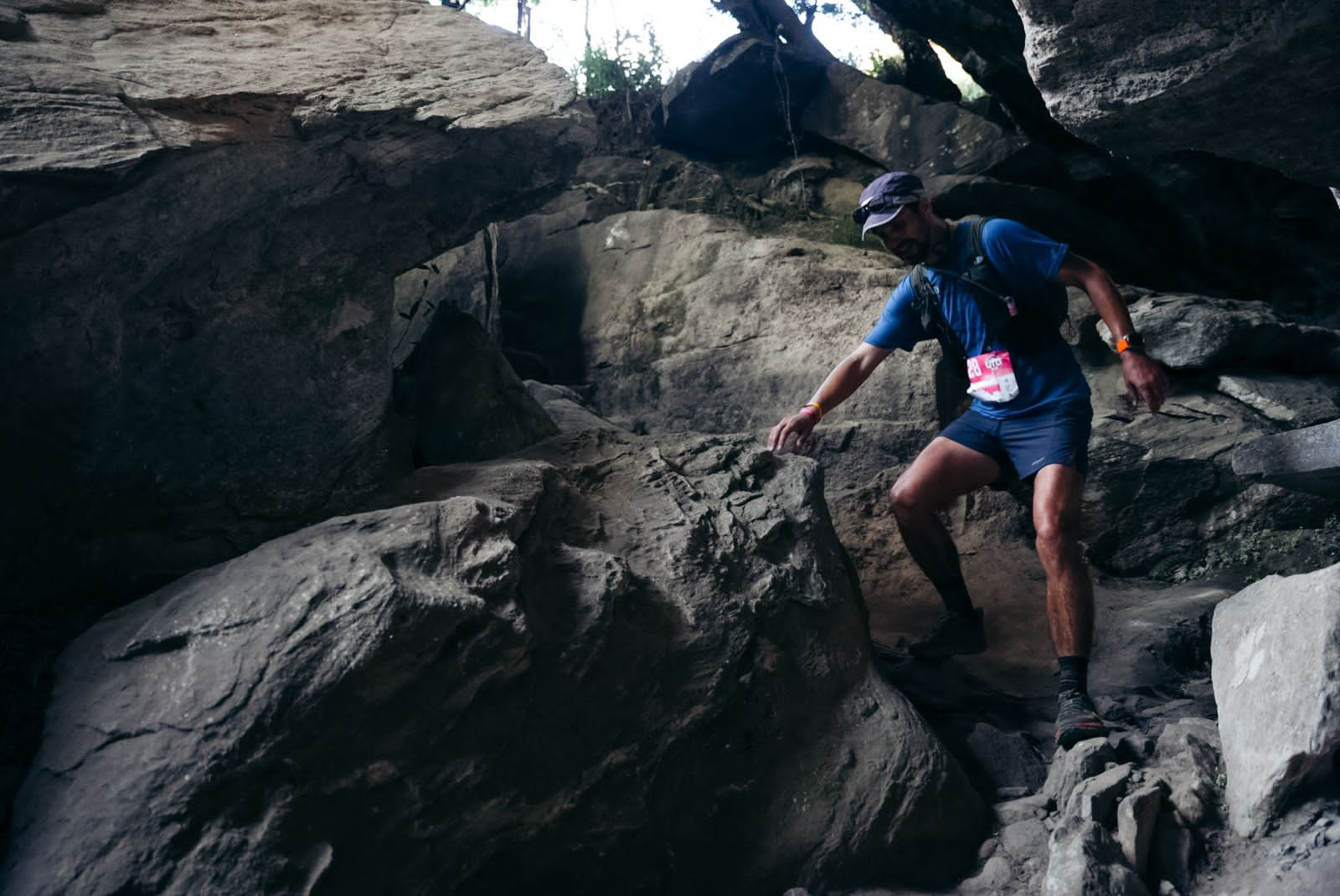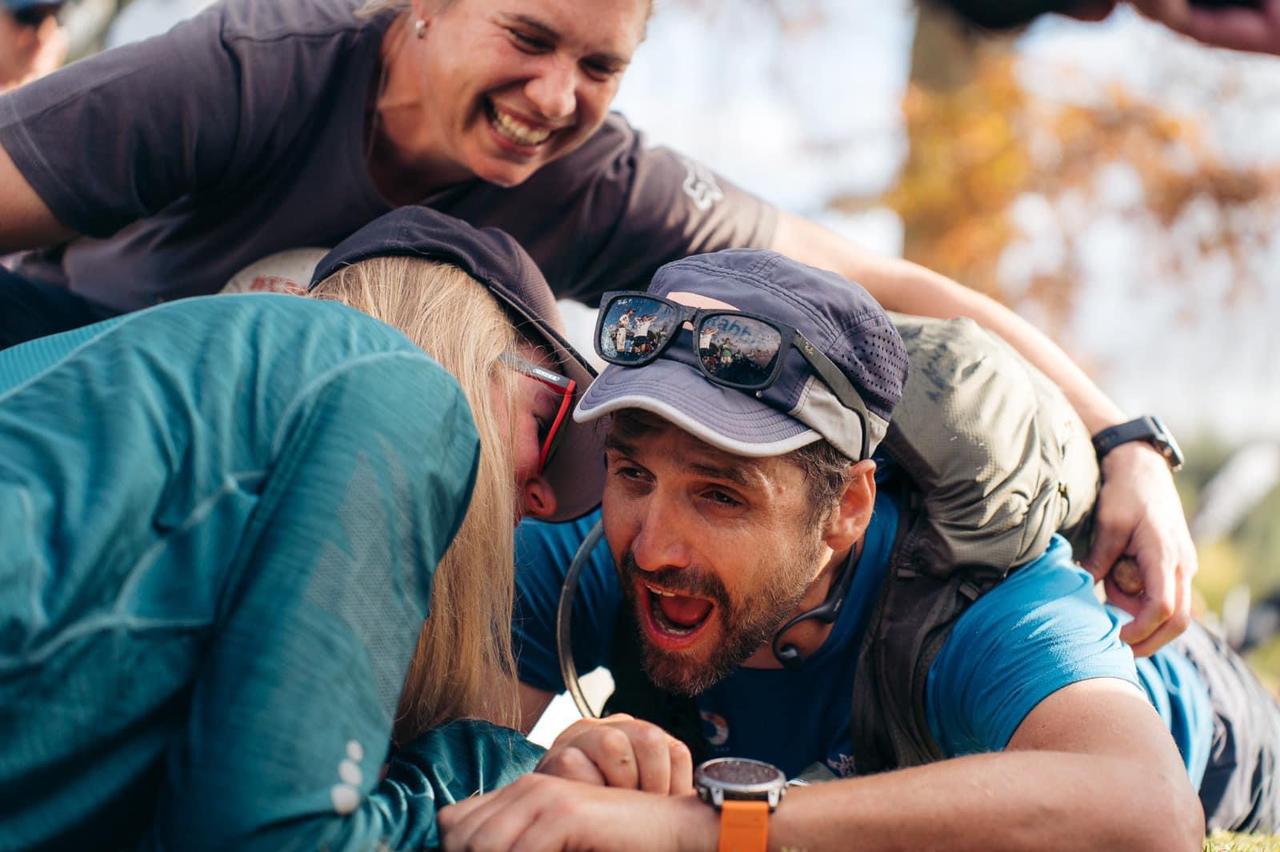Achieving the Impossible

How I Raced My First 100 Miler, Ultra Trail Drakensberg
So, where do I even begin? Ah, yes... You see, without a clear destination in mind, it's hard to plot the course. In 2022, while watching friends celebrate completing the Comrades Marathon, I sat there with a glass of wine contemplating my next challenge. Within moments, I convinced myself that running 100 miles was within my reach. Before I could second-guess myself, I purchased my ticket. The next morning, reality set in as I received the confirmation of my entry. One hundred miles – a bit farther than a park run. Determined not to back down, I began outlining my strategy, which started something like this:
Scoping:
The race begins at the highest pub in Africa, nestled at 2874m above sea level. It kicks off with a demanding 70km loop around the escarpment, ascending Black Mountain and reaching the pinnacle of Thabana Ntlenyana at 3482m. The route then descends via Sani Pass, spanning another 100km through the scenic Underberg farmlands, before concluding with the final kilometers on the Giants Cup Trail at the Protea Hotel.
In total, runners face a daunting 167km journey with a substantial elevation gain of 4500m. To put this in perspective, a standard marathon covers 42.2km with less than 500m elevation gain. For those familiar with the famed Comrades Marathon, which spans 87km with approximately 1900m elevation gain (depending on the course route), this ultra trail presents a significantly greater challenge.
Planning:
As the reality of the race loomed, despite its distant date, I plunged into research mode. Conversations with seasoned athletes revealed critical insights: altitude sickness is a common adversary in Lesotho, pacing strategy is paramount, and minimizing time spent at aid stations can make or break your performance.
Although I had some background in ultra-distance races, nothing could fully prepare me for this monumental challenge. Recognizing the need for expert guidance, I enlisted Jo Keppler as my coach—a decision influenced by her previous victory in the same event and her newfound role as head coach guess I talked her into becoming a coach. This choice proved pivotal. While formal training was set to commence in January, my eagerness and nerves propelled me to start months earlier. During the December holidays, I immersed myself in "The Uphill Athlete" by Kilian Jornet, renowned as one of the world's premier trail runners.
The Work:
Training became a relentless pursuit. Beginning at 50-60km per week with 1000m elevation gain, I swiftly escalated to 80-120km weekly, tackling elevations of up to 4500m. The approach was systematic: prioritize consistency, gradually enhance speed, and meticulously manage workload to sidestep overtraining.
Testing:
Ultra-distance running taught me the paradox of going slow to go fast. Much of my training involved maintaining a steady, conversational pace, with minimal time spent at race pace or higher intensities. Rather than attempting to cover the entire 160km distance in one go, I opted for targeted simulations. For instance, I tackled the challenging 34km Kloof Corner to Kalk Bay route, which featured 1700m of elevation gain. These simulations were invaluable in refining my strategies for pacing, nutrition, and gear selection. Think CI/CD
Strategy:
Drawing on insights from experienced runners like Jo and Amri, both previous winners of the race, I honed my approach. Given logistical challenges, including the need for a single support team across Lesotho and South Africa, my sister played a crucial role providing much needed support in Lesotho then shooting down Sani Pass before the border closes.
Execution:
Before the race began, knowing I would be waiting at the start for about two hours, I prioritized rest and hydration. I made sure to keep off my feet and consumed 750ml of beetroot juice, touted as a scientifically-backed method to help cope with altitude challenges. No idea if it worked though but was interesting at the medical checks when they asked if there was blood in my urine.
0-70km:
Right from the start, I exercised caution, mindful not to overexert on fresh legs. Initially, around 10 runners were ahead of me. By the 12km mark, I overtook the first runner, who had led earlier but struggled with the uneven terrain of the cattle tracks. Having a support crew on the Lesotho side proved invaluable, ensuring my well-tested nutrition was readily available. Unfortunately, a mix-up at the second or third stop left me hungry during the ascent of Black Mountain. Despite this setback, I managed to minimize my stop times more efficiently than others, totaling around 15 stops. Each minute saved at these checkpoints would prove crucial over the course of the race.
After Black Mountain, the ascent of Thabana Ntlenyana began as the sun set, revealing breathtaking views and plummeting temperatures. I layered up and encouraged fellow runners as they passed me. The final push to reach the peak of Thabana was brutal; fierce winds made it feel as though I might freeze. At 3300m altitude, the air was thin, making breathing a struggle. I paused briefly at the summit bonfire, donned long pants, and prepared for the descent.
Here, I made my second mistake. With approximately 14km remaining before Sani Pass, I had a bottle and a half of fluids left. Assuming it was downhill and wouldn't take more than an hour and a bit, I started to pick up the pace. A fellow runner, unable to keep up, urged me to press on alone. Out of nutrition and wary of drinking potentially contaminated water due to nearby cattle, I pressed onward into the night.
Then, about 5km shy of the aid station, my worst fear materialized: I hit a wall. The distant lights of the aid station mocked me as I struggled to maintain forward momentum in the dark. Alternating between short bursts of running and cautious walking, I could see headlights coming up behind me think I was in fifth place now. Finally reaching the aid station at the 70km mark and passing the medical check, I consumed four hours' worth of nutrition in a desperate bid to recover. With my chest burning and breathing labored at high altitude, my focus shifted to descending to lower altitudes for relief.
70-100km:
I began the descent down Sani Pass alone, in the dead of night, after starting the race at 10 am, making it around 10 pm by now. The only thought keeping me going was reaching the finish line to end the agony I was enduring. After about 2 km, I paused and realized the layers I added at Thabana might be hindering my progress. In a bold move, I shed all unnecessary clothing and continued in just a t-shirt and shorts, despite the chilly conditions.
Here, things started to get surreal. I noticed a "for sale" sign on the mountainside and briefly pondered the cost of the nature reserve I was traversing. I glimpsed shepherds on ponies herding sheep within the reserve, only later realizing they were stars, and then distant lights from a town. My playlist became my lifeline, helping me stay focused on avoiding injury and conserving my quads on the 35km downhill stretch.
As the nutrition from the aid station kicked in, my pace began to improve. I encountered the runner then in second place and we stopped at an aid station together, where I felt rejuvenated. Passing him, I casually asked if he had seen the enormous dinner-plate-sized spider I had spotted, he asked about it the next day clearly that one wasnt a holucination.
This stretch proved to be the loneliest part of the race. Hallucinating in the middle of the night, I questioned my own sanity and entertained thoughts of quitting at the next stop, especially as I passed the hotel where I was staying.

100-140km
Despite feeling down, I was determined as I crossed the river at the 100km mark, the cold water jolting me awake around 2AM. My incredible support team sprang into action; amidst my groggy mutterings, they informed me that the first-place runner was approximately an hour ahead, likely about 10km ahead, and the third-place runner was only about 5 minutes behind. My sister quickly fed me, my wife changed my soaked shoes, and a pacer joined me for the next 40km stretch.
Reaching the 100km mark, the farthest I had ever run at that point, I faced the unknown ahead. Despite uncertainties, I held onto what I believed was a solid strategy. We tackled a few hundred meters of ascent, a welcome change after the grueling 35km descent down Sani Pass. Conversation with my pacer proved comforting as we entered the farmlands with the first light. Surprisingly, I still had some energy left, managing to maintain a pace of about 6 minutes per kilometer despite occasional breakdowns.
All the preparation, conversations, training runs, gear checks, and detailed briefings with my support team were beginning to pay off. Around the 114km mark, my team informed me that my competitor was now just 15 minutes ahead. We made a swift stop and pushed on, hoping to close the gap. The leader noticed my pursuit and accelerated, but I remained determined.
Just before the 130km mark, still trying to increase my pace, I accidentally kicked a tree stump protruding from the ground, shooting pain through my leg. I suspected a broken toe, but jokingly assured my wife during the medical check:
Wife: "What's your name?" Me: "Ross." Wife: "How many fingers am I holding up?" Me: "2." Wife: "What day is it?" Me: "Race day!"
It felt like an F1 pit stop as I quickly received new shoes, nutrition, and food. We resumed at a wobbly pace along the river, thankful for the flat terrain.
A surprise awaited me at the next aid station where my coach Jo and Amri, both Ultra Trail Drakensberg winners, joined in. With a brief pep talk and a reminder to focus on the pain, Amri urged me forward, hinting at a possible victory if would only keep shuffling. At the time, I couldn't fathom it.
As they say, the real adventure begins when things go awry. Shortly after that aid station, I hit a low point for the second time. My legs gave out, and I couldn't move. Sitting beside the trail with my pacer Lukas, I felt defeated and contemplated quitting. After resting for a few minutes, consuming nutrition and an anti-inflammatories, I resumed at a slow walk.
Arriving at the next station, with tears in my eyes. Despite my wife's reassuring demeanor, I sensed everyone's concern. They cooled me down with cold water, and after parting ways with Lukas, Jo ran alongside me briefly. I expressed my gratitude for her unwavering support, and we shared a heartfelt moment. She emphasized that my adversary likely didn't know the final stretch down the gorge to the hotel well, suggesting I make a move there if possible. I admitted we weren't in any shape for sudden maneuvers.
Stretch Before the Last Aid Station through Drak Gardens:
Alone again with only my music for company and still holding onto second place, I hoped the third-place runner wouldn't catch up. With about 20-30km left to go, I was reduced to a slow walk towards the finish line. As I tackled the second-to-last climb, runners from shorter distance races began overtaking me. Feeling like a zombie, I pressed on mechanically. This stretch felt like purgatory, a test of character.
The Last 12km:
The strategy here was straightforward: my body was protesting, signaling it had had enough. Eating and drinking were nearly impossible; I reluctantly downed a Red Bull just in case. My incredible support team ensured my pack was intact with all mandatory gear, which would be checked at the finish. Honestly, I would have gladly hopped into a car and headed home at that point. Thankfully, it was just 12km left with a manageable 300m climb. The race leader maintained a 15-minute lead, but my focus was solely on finishing.
As I struggled on, the top woman from the 62km race passed by and asked if I was okay. I was stationary at the time and humorously replied that no one could help me. It seemed funny in that moment.
Then, against all odds, around 6km from the finish at the peak just before the descent, a participant from the 62km race whom I knew from previous races caught up with news: "Well done mate, you passed the leader on the way up. He misjudged a turn and has been trying to catch me for the last hour or so." he was trailing about 50m behind me at that time.
Death or Glory!

The decision was swift. Now was not the time for holding back or complaining. This was my chance, my moment! In a solitary moment of determination, I realized this was the culmination of all the training adventures, the unwavering support from friends and family, and the countless hours of planning and preparation. It boiled down to who could endure the most suffering and cross that finish line.
Setting off with renewed vigor, I felt my legs recovering from the slow ascent, fueled by the Red Bull coursing through my veins from an hour earlier. As I raced on, I joked that if I fell into the gorge, at least I'd get a free chopper ride and wouldn't have to run any farther.
The winner of the 62km race, collecting water from a stream, looked up in surprise as the near-dead zombie from moments ago surged past with a newfound mission.
Summoning every ounce of strength in the final 5km, I pushed relentlessly. My body screamed at me to slow down, but I ignored it. Though it felt like I was flying, Strava would later reveal I was barely maintaining a running pace of around 7 minutes per kilometer. The camera crew ran behind me, capturing my descent, as I overtook several runners in the gorge.
Approaching the last kilometer with jelly legs, I constantly glanced over my shoulder, fearing getting caught by the runner who had been close behind just moments ago. Anything could change in an instant, and I couldn't afford to ease up. This wasn't just a race; it was a moment where the underdog triumphed, a redemption for every misstep in my life.
Crossing the finish line, I collapsed, utterly spent. My support team—my sister, wife, and Lukas—were there, jubilant and probably more excited than I was, holding a bottle of champagne. It was surreal—I had completed my first 100 miler and emerged victorious! Making up around 34 minutes in the last 5km on the nearest compettitor.

The aftermath
So how did an ordinary pleb runner like me manage to achieve such a feat? Was it the rigorous training? The unwavering support? Perhaps luck or a well-crafted strategy? The truth is, I'll never have a definitive answer. Here's my perspective:
In the end, the whole was greater than the sum of its parts. Every little detail came together seamlessly. I set a bold goal, meticulously scoped my project, and acknowledged that this endeavor was larger than just myself, seeking assistance where needed. I heeded advice from seasoned experts who possessed more knowledge than I did.
Crucially, I had an exceptional support team. Each member, with their unique skills, played an immense role in my success. They motivated me on the days I lacked motivation, pushed me to persevere when I wanted to quit, and were there to pick me up after grueling runs, never expecting anything in return.
Of course, I had to put in the hard work; there's no shortcut around that. But their unwavering support made every bit of effort worthwhile. It was then that I realized achievements only hold true meaning when shared with others.
Conclusion
This experience underscored a profound realization: ultra-running isn't just about physical endurance; it's about meticulous planning, teamwork, and continuous improvement—much like DevOps. In both realms, achieving goals requires a systematic approach, constant learning, and relentless pursuit of excellence.
Reflecting on the race, it's clear that every step, every challenge, and every triumph holds valuable lessons applicable to both personal and professional spheres. Embracing these principles can lead to remarkable achievements, whether on the trail or in the tech world.
Member discussion